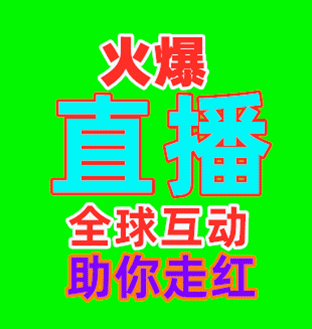?
?
- 2012年11月,瑞士蘇黎世-總是有很多的討論之間的持續競爭棉和合成纖維,這是可以預期的。這兩個(gè)行業(yè)的市場(chǎng)份額為每廢料奮斗,以確保其未來(lái)的盈利能力,?但棉花的未來(lái)生存能力的最大威脅是不是人造絲,尼龍,甚至的聚酯-這是手機。和教育。和醫療保健,食品和燃料。?這是主要的棉有限公司的馬克Messura的在他的演講十一月四日至6日在年度會(huì )議上,國際紡織制造商聯(lián)合會(huì )在河內舉行,越南的消息。?“毫無(wú)疑問(wèn),競爭他說(shuō),棉花和合成纖維之間的激烈,但我們在紡織行業(yè)中的所有真正關(guān)心的是,今天的人們日益多樣化的費用“,吃進(jìn)他們的服裝上的支出。在美國,例如,服裝占的總消費支出的份額已下降5.7%,在1989年,為4.7%,1999年,在2011年的3.5%。?與此同時(shí),醫療保健支出已增長(cháng)從5.3%至5.1%在這段時(shí)間內的6.7%。在2011年的燃料支出從1989年的3.5%增加至5.3%,而教育支出從1.3%躍升至2.1%,在該期限內。?雖然棉花和合成纖維將繼續爭取市場(chǎng)份額的牙齒和指甲,大局觀(guān)的棉花是能夠擴大其數量,用途和應用。?“的所有棉花生產(chǎn)在世界上的80%和85%,進(jìn)入服裝,服裝將繼續占主導地位的最終使用的棉花,”他說(shuō)。“但它也可用于油,冰淇淋,動(dòng)物飼料和建筑材料,紡織企業(yè)可能無(wú)法,紡棉花種子,所以這些應用程序沒(méi)有必然影響工廠(chǎng)業(yè)主,但他們是非常重要的經(jīng)濟健康狀況的棉花Messura繼續擴大的應用棉花的農民,可以用于生產(chǎn)在未來(lái)將是一個(gè)推動(dòng)力量。?“棉纖維的質(zhì)量,通過(guò)技術(shù)不斷改變和提高,”,“棉花是一種人工合成的纖維,但它是纖維的enginneered,和它的不斷發(fā)展。“?與此同時(shí),環(huán)境友好和可持續發(fā)展-普遍認為,作為消費者的關(guān)鍵因素,當他們做出購買(mǎi)決策-從根本上供應鏈的問(wèn)題,而不是市場(chǎng)的問(wèn)題,他補充說(shuō)。?“美國棉花公司的研究表明,很少有消費者愿意支付一定的費用,是親環(huán)境的服裝,家用紡織品,有機,可持續,可回收利用或可堆肥”,Messura說(shuō),“大約有27%的消費者說(shuō)他們把精力尋找環(huán)保友好的服裝,而且這個(gè)數字比五年前低。這不是一個(gè)因素,更重要的是消費者的,它實(shí)際上是變得不那么重要他們,當他們做出購買(mǎi)決定。“?他謹慎地指出,該研究并不意味著(zhù)可持續性并不重要,只知道它是一個(gè)更重要的問(wèn)題是對消費者的供應鏈比。“?人們經(jīng)常會(huì )問(wèn):我們怎樣才能爭取更多的棉花種植時(shí),世界需要更多的食物?那么,在未來(lái),世界上的很多事情需要更多的!這就是為什么棉花-并將繼續-提高生產(chǎn)實(shí)踐。產(chǎn)業(yè)創(chuàng )新和找到需要較少的土地,水少,耗能少,和更少的化學(xué)物質(zhì),以產(chǎn)生更多的纖維棉方式,“他說(shuō) -----------------------------------------
ITMF Annual Conference 2012 In Hanoi: Supply Chain Session: Cotton Incorporated's Messura Addresses Cotton's Future In The Supply Chain ZURICH, Switzerland , 2012 — There is always a lot of discussion about the ongoing competition between cotton and synthetic fibers, which is to be expected. The two industries fight hard for every scrap of market share to ensure their future profitability.?
But the biggest threat to cotton's future viability isn't rayon, nylon, or even polyester -- it's the cell phone. And education. And healthcare, food, and fuel.?
That was the primary message delivered by Cotton Incorporated's Mark Messura during his presentation at the annual meeting of the International Textile Manufacturers Federation, held in Hanoi, Vietnam Nov. 4-6.?
"Without question, the competition between cotton and synthetic fibers is intense, but the real concern for all of us in the textile industry is that people today have increasingly diverse expenses" that eat into their expenditures on clothing, he said. In the United States, for example, clothing's share of total consumer spending has dropped from 5.7% in 1989, to 4.7% in 1999, to 3.5% in 2011.
At the same time, healthcare expenditures have grown from 5.1% to 5.3% to 6.7% during that time period. Fuel expenditures have increased from 3.5% in 1989 to 5.3% in 2011, while education expenditures jumped from 1.3% to 2.1% during that timeframe.?
While cotton and synthetic fibers will continue to fight tooth and nail for market share, the bigger picture for cotton is the ability to expand its number of uses and applications.?
"Between 80% and 85% of all cotton produced in the world goes into clothing, and clothing will continue dominate the end uses for cotton," he said. "But it's also used in oil, ice cream, animal feed and construction materials. Textile companies might not be able to spin cotton seed, so those applications don't necessarily impact mill owners. But they are critically important to the economic health of cotton farmers, so expanding the number of applications cotton can be used in will be a driving force for production in the future.?
"The quality of cotton fiber is constantly changing and improving through technology," Messura continued. "Cotton isn't a synthetic fiber, but it is an enginneered fiber, and it's constantly evolving."?
Meanwhile, environmental friendliness and sustainability -- commonly thought of as crucial factors for consumers when they make purchasing decisions -- are fundamentally supply chain issues, not market issues, he added.?
"Cotton Incorporated research shows that very few consumers are willing to pay a premium for clothing or home textiles that are enviornmentally friendly, organic, sustainable, recyclable or compostable," Messura said. "About 27% of consumers say they put effort into finding environmentally friendly apparel, and that number is lower than it was five years ago. It's not a factor that's becoming more important to consumers; it's actually becoming less important to them when they make purchasing decisions."?
He was careful to point out that the research doesn't mean sustainability isn't important ... only that it's a more important issue for the supply chain than it is for consumers."?
People often ask: How can we strive to plant more cotton when the world needs more food? Well, in the future, the world is going to need more of a lot of things! That's why cotton has - and will continue to - improve its production practices. The industry will innovate and find ways for cotton to require less land, less water, less energy, and fewer chemicals to generate even more fiber," he said.?
來(lái)源: 紡織世界
相關(guān)資訊
- 中國紡聯(lián)會(huì )長(cháng)孫瑞哲:立高遠之意,行篤實(shí)之效,創(chuàng )開(kāi)闊之境!
- 【央視快評】奮力推動(dòng)新時(shí)代社會(huì )工作高質(zhì)量發(fā)展-紡織服裝周刊
- 李強在浙江調研時(shí)強調 深入貫徹落實(shí)中央經(jīng)濟工作會(huì )議精神 奮力創(chuàng )造高質(zhì)量發(fā)展新業(yè)績(jì)
- 中國紡聯(lián)會(huì )長(cháng)孫瑞哲:堅定信心,干在實(shí)處,啟錦繡新篇,繪美好未來(lái)-紡織服裝周刊
- 2024紡織行業(yè)綠色發(fā)展勞動(dòng)競賽復審結果公示
- 中共中央關(guān)于進(jìn)一步全面深化改革 推進(jìn)中國式現代化的決定
- 工信部印發(fā)2024年度國家工業(yè)節能診斷服務(wù)任務(wù),并發(fā)布《紡織行業(yè)節能診斷服務(wù)指南》
- 陳大鵬:傳承理想與信念 傳遞責任和使命
- 中國紡聯(lián)會(huì )長(cháng)孫瑞哲:以開(kāi)放開(kāi)源匯時(shí)尚大美,以新質(zhì)新力開(kāi)錦繡新篇
- 李強總理在新疆調研,走訪(fǎng)昌吉溢達紡織等企業(yè)了解情況
- 李強對做好地方金融工作作出重要批示強調:堅持金融服務(wù)實(shí)體經(jīng)濟 推動(dòng)金融高質(zhì)量發(fā)展
- 2024(第七屆)物流與供應鏈誠信創(chuàng )新大會(huì )暨天津(東疆)網(wǎng)絡(luò )貨運平臺發(fā)展大會(huì )在天津召開(kāi)
更多推薦供應
更多求購信息
更多加工信息
- 承接各種男女裝童裝毛衣加工業(yè)務(wù)
- 生產(chǎn)銷(xiāo)售印紙印花 花型花紙及加工
- 吳中郭巷創(chuàng )威激光加工激光切割機打標
- 浙銘沖孔制品廠(chǎng)承接沖孔、切雕加工業(yè)務(wù)
- 承接男式T恤衫,POLO衫加工銷(xiāo)售業(yè)務(wù)
- 松崗戴琦詩(shī)服裝廠(chǎng)承接服裝加工業(yè)務(wù)
- 承接男裝、休閑服裝等產(chǎn)品生產(chǎn)加工業(yè)務(wù)
- 承接戶(hù)外服裝、沖鋒衣軟殼沖鋒衣加工
- 峰德針織內衣承接內衣產(chǎn)品加工銷(xiāo)售業(yè)務(wù)
- 承接內外貿毛衣生產(chǎn)毛衣貼牌加工
資訊排行
- 時(shí)尚產(chǎn)業(yè)流通轉型升級路怎么走?無(wú)錫這場(chǎng)圓桌會(huì )議帶來(lái)實(shí)用指南
- 面臨新的機遇和挑戰 紡織行業(yè)鍛造競爭新優(yōu)勢
- 2025濰坊(諸城)紡織服裝產(chǎn)業(yè)國際精準采購節即將啟幕
- 2024紡織行業(yè)綠色發(fā)展勞動(dòng)競賽復審結果公示
- 打造棉服品牌,助力鄉村振興
- 鴻天集團核心業(yè)務(wù)持續增長(cháng),創(chuàng )新驅動(dòng)發(fā)展新篇章
- 乘改革之勢 開(kāi)錦繡新篇,2024中國紡織大會(huì )在柯橋召開(kāi)!
- 左拉時(shí)裝:以五大風(fēng)格系列解讀2024秋冬時(shí)尚趨勢
- “聚鏈創(chuàng )新·應對變局”2024毛紡織產(chǎn)業(yè)集群高質(zhì)量發(fā)展座談會(huì )在大朗召開(kāi)
- 崛起之路|新賽道的領(lǐng)航者——記吉林工程技術(shù)師范學(xué)院教授張躍
- 智慧賦能!打造“新智+新質(zhì)”產(chǎn)業(yè)電商新生態(tài)-紡織服裝周刊
- 中國紡聯(lián)正式啟動(dòng)紡織服裝行業(yè)可信數據空間建設,首批成員單位共同倡議“廣泛互聯(lián)、資源共享、價(jià)值共創(chuàng )”
- 江蘇大生集團有限公司黨委書(shū)記、董事長(cháng)漆穎斌:歷久彌新,“生生”不息-紡織服裝周刊
- 青島國際時(shí)裝周:中國職業(yè)裝創(chuàng )新研發(fā)平臺引領(lǐng)潮流,展現職業(yè)新風(fēng)貌與行業(yè)前瞻
- 中國紡聯(lián)啟動(dòng)《紡織服裝行業(yè)碳足跡管理體系》標準編制工作
視覺(jué)焦點(diǎn)
-
 山東聯(lián)潤新材料科技有限公司董事長(cháng)兼總經(jīng)理陳啟升:為美好生活創(chuàng )新
山東聯(lián)潤新材料科技有限公司董事長(cháng)兼總經(jīng)理陳啟升:為美好生活創(chuàng )新
-
 面臨新的機遇和挑戰 紡織行業(yè)鍛造競爭新優(yōu)勢
面臨新的機遇和挑戰 紡織行業(yè)鍛造競爭新優(yōu)勢
-
 中國紡聯(lián)啟動(dòng)《紡織服裝行業(yè)碳足跡管理體系》標準編制工作
中國紡聯(lián)啟動(dòng)《紡織服裝行業(yè)碳足跡管理體系》標準編制工作
-
 打造棉服品牌,助力鄉村振興
打造棉服品牌,助力鄉村振興
-
 產(chǎn)學(xué)研用 校企合作 助推產(chǎn)業(yè)設計創(chuàng )新升級
產(chǎn)學(xué)研用 校企合作 助推產(chǎn)業(yè)設計創(chuàng )新升級
-
 江蘇大生集團有限公司黨委書(shū)記、董事長(cháng)漆穎斌:歷久彌新,“生生”不息-紡織服裝周刊
江蘇大生集團有限公司黨委書(shū)記、董事長(cháng)漆穎斌:歷久彌新,“生生”不息-紡織服裝周刊
-
 2024中國紡織服裝行業(yè)年度大盤(pán)點(diǎn)——十大新聞事件-紡織服裝周刊
2024中國紡織服裝行業(yè)年度大盤(pán)點(diǎn)——十大新聞事件-紡織服裝周刊
-
 乘改革之勢 開(kāi)錦繡新篇,2024中國紡織大會(huì )在柯橋召開(kāi)!
乘改革之勢 開(kāi)錦繡新篇,2024中國紡織大會(huì )在柯橋召開(kāi)!
-
 質(zhì)領(lǐng)2025企業(yè)談|新鄉化纖黨委書(shū)記、董事長(cháng)邵長(cháng)金:向“新”求“質(zhì)”,逐夢(mèng)白鷺新篇-紡織服裝周刊
質(zhì)領(lǐng)2025企業(yè)談|新鄉化纖黨委書(shū)記、董事長(cháng)邵長(cháng)金:向“新”求“質(zhì)”,逐夢(mèng)白鷺新篇-紡織服裝周刊
-
 新華社刊發(fā):“老”紡織“新”力量
新華社刊發(fā):“老”紡織“新”力量






